Pronunciation /ˈvɪnˈkrɪstiːn/ MedlinePlus a682822 Molar mass 824.958 g/mol Formula C46H56N4O10 Trade name Oncovin, Vincasar, others | AHFS/Drugs.com Monograph CAS ID 57-22-7 ATC code L01CA02 (WHO) Protein binding ~44% | |
 | ||
Trade names Oncovin, Vincasar, others Pregnancycategory AU: DUS: D (Evidence of risk) Excretion Faeces (70-80%), urine (10-20%) | ||
Vincristine, also known as leurocristine and marketed under the brandname Oncovin among others, is a chemotherapy medication used to treat a number of types of cancer. This includes acute lymphocytic leukemia, acute myeloid leukemia, Hodgkin's disease, neuroblastoma, and small cell lung cancer among others. It is given intravenously.
Contents
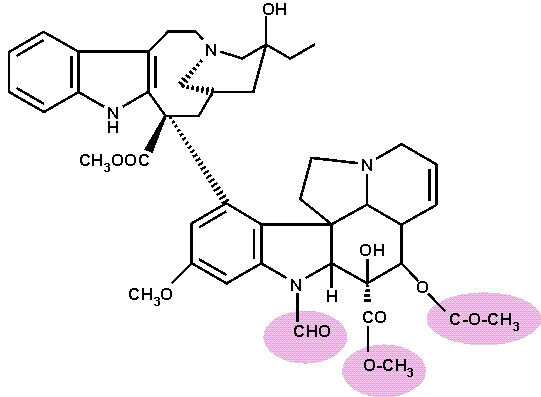
Most people experience some side effects from vincristine treatment. Commonly it causes a change in sensation, hair loss, constipation, difficulty walking, and headaches. Serious side effects may include neuropathic pain, lung damage, or low blood white cells. It will likely cause harm to the baby if given during pregnancy. It works by stopping cells from dividing properly.
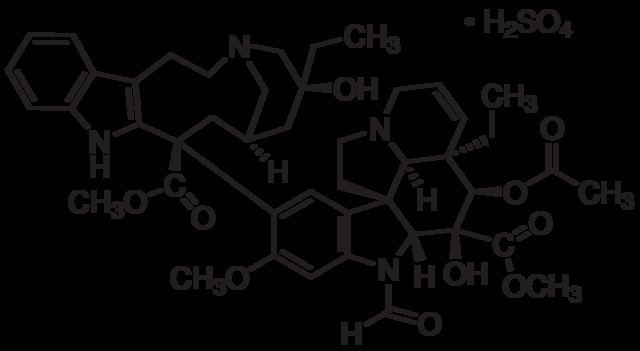
Vincristine was first isolated in 1961. It is on the World Health Organization's List of Essential Medicines, the most effective and safe medicines needed in a health system. The wholesale cost in the developing world is between 1.80 and 42.60 USD per dose. It is a vinca alkaloid that can be obtained from the Madagascar periwinkle Catharanthus roseus.

Medical uses
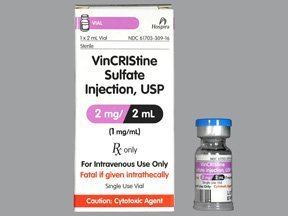
Vincristine is delivered via intravenous infusion for use in various types of chemotherapy regimens. Its main uses are in non-Hodgkin's lymphoma as part of the chemotherapy regimen CHOP, Hodgkin's lymphoma as part of MOPP, COPP, BEACOPP, or the less popular Stanford V chemotherapy regimen in acute lymphoblastic leukemia (ALL), and in treatment for nephroblastoma. It is also used to induce remission in ALL with dexamethasone and L-Asparaginase, and in combination with prednisone to treat childhood leukemia. Vincristine is occasionally used as an immunosuppressant, for example, in treating thrombotic thrombocytopenic purpura (TTP) or chronic idiopathic thrombocytopenic purpura (ITP).
Side effects
The main side effects of vincristine are chemotherapy-induced peripheral neuropathy, hyponatremia, constipation, and hair loss.

Chemotherapy-induced peripheral neuropathy can be severe, and may be a reason to reduce or avoid using vincristine. The symptoms of this are progressive and enduring tingling numbness, pain and hypersensitivity to cold, beginning in the hands and feet and sometimes affecting the arms and legs. One of the first symptoms of peripheral neuropathy is foot drop: A person with a family history of foot drop and/or Charcot-Marie-Tooth disease (CMT) should avoid the taking of vincristine.
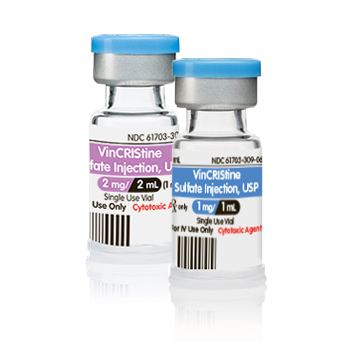
Accidental injection of vinca alkaloids into the spinal canal (intrathecal administration) is highly dangerous, with a mortality rate approaching 100 percent. The medical literature documents cases of ascending paralysis due to massive encephalopathy and spinal nerve demyelination, accompanied by intractable pain, almost uniformly leading to death. Several patients have survived after aggressive and immediate intervention. Rescue treatments consist of washout of the cerebrospinal fluid and administration of protective medications. Children may do better following this injury. One child, who was aggressively treated at the time of the injection, recovered almost completely with only mild neurological deficits. A significant series of inadvertent intrathecal vincristine administration occurred in China in 2007 when batches of cytarabine and methotrexate (both often used intrathecally) manufactured by the company Shanghai Hualian were found to be contaminated with vincristine.
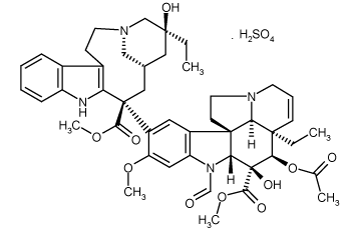
The overuse of vincristine may also lead to drug resistance by overexpression of the p-glycoprotein pump (Pgp). There is an attempt to overcome resistance by the addition of derivatives and substituents to the vincristine molecule.
Mechanism of action
Vincristine works partly by binding to the tubulin protein, stopping the cell from separating its chromosomes during the metaphase; the cell then undergoes apoptosis. The vincristine molecule inhibits leukocyte production and maturation.
Pharmacology
Vincristine is created through the semi-synthesis coupling of indole alkaloids vindoline and catharanthine in the vinca plant. It can also now be synthesized through a stereocontrolled total synthesis technique which retains the correct stereochemistry at C18' and C2'. The absolute stereochemistry at these carbons is responsible for vincristine's anticancer activity.
The liposome encapsulation of vincristine enhances the efficacy of the vincristine drug while simultaneously decreasing the neurotoxicity associated with it. Liposome encapsulation increases vincristine's plasma concentration and circulation lifetime in the body, and allows the drug to enter cells more easily.
History
Having been used as a folk remedy for centuries, studies in the 1950s revealed that the rosy periwinkle Catharanthus roseus contained 70 alkaloids, many of which are biologically active. While initial studies for its use in diabetes mellitus were disappointing, the discovery that it caused myelosuppression (decreased activity of the bone marrow) led to its study in mice with leukemia, whose lifespan was prolonged by the use of a vinca preparation. Treatment of the ground plant with Skelly-B defatting agent and an acid benzene extract led to a fraction termed "fraction A". This fraction was further treated with aluminium oxide, chromatography, trichloromethane, benz-dichloromethane, and separation by pH to yield vincristine.
Vincristine was approved by the United States Food and Drug Administration (FDA) in July 1963 as Oncovin. The drug was initially discovered by a team led by Dr. J.G. Armstrong, then marketed by Eli Lilly and Company.
Suppliers
Three generic drug makers supply vincristine in the United States - APP, Mayne, and Sicor (Teva).
Research
In 2012 the FDA approved a Liposomal formulation of Vincristine. A novel nano-particle bound version of Vincristine is under development.
